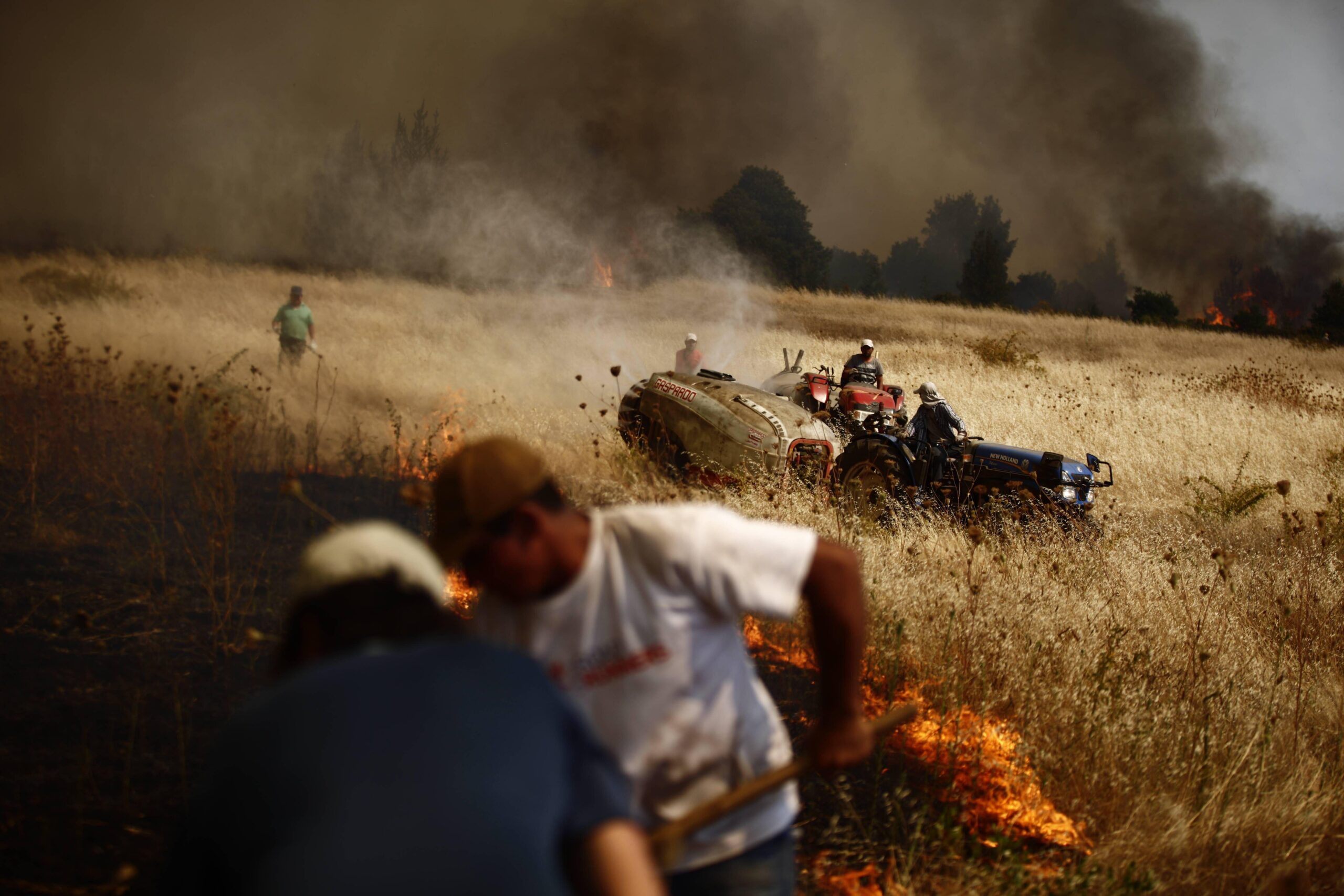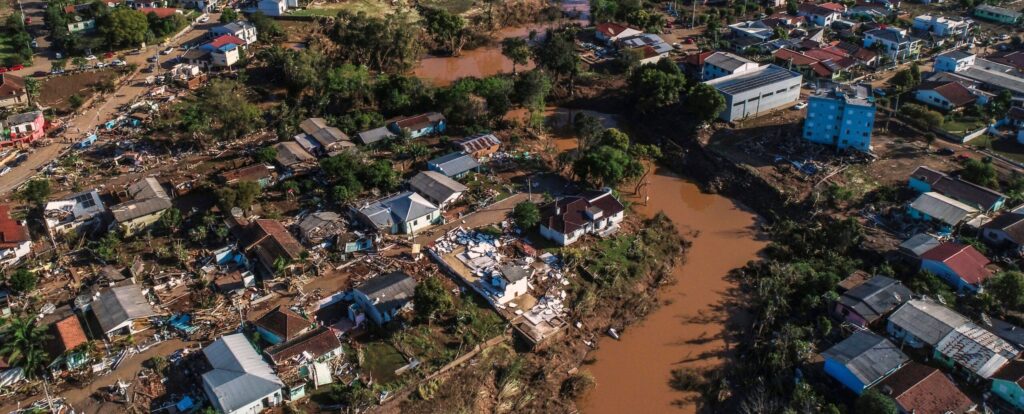Misinforming Latin America: Narrative analysis of extreme weather
janvier 23, 2024
Extreme weather; cyclones, wildfires, heatwaves. These are some of the worst catastrophes that face society. They fundamentally reshape peoples’ lives and landscapes. Climate science shows that these events are becoming more frequent and extreme due to rapid global warming.
Climate deniers playbook
Our recent research explored how alongside causing chaos in communities, extreme weather is a battleground in the information war on climate change. We analyzed the misinformation that mushroomed around three extreme weather events in Latin America.

These included flooding in Rio Grande do Sul, Brazil, in September 2023, which saw right-wing politicians propagate rumors that the devastation was caused by a burst dam. We also looked at the catastrophic wildfires which ravaged Chile in February 2023. Presented by climate deniers as a crime issue caused by arsonists, they neglected to mention the decade-long drought, poor forestry practices, and extreme heat resulting in tinderbox conditions. Our final case study centers on Cyclone Yaku, Peru, in March 2023, where conspiracy theorists asserted that the storm had been ‘geoengineered’ to occur, blaming HAARP, a scientific research laboratory, for triggering the storm.
These cases all obscured the climate-related causes of extreme weather. Diverting a distracted public’s attention focus from the real need for enhanced preparedness, mitigation, and response to increasingly common and severe events. This mis-attribution of the cause of crises is a core tool in the climate deniers ‘playbook’, and is now being deployed against cases of extreme weather.
Across all case studies, the narratives misinformation constructed were not singular, but rather acted as to magnify existing discourse. For example, the burst dam argument in Brazil played out between the right and left wing, well versed in publicly undermining each other for many years preceding the flooding. Equally, we see arson narratives built around wildfires repeatedly identified in Greece, Spain, the USA, and Canada among others.

An inbuilt vulnerability
Simultaneously the specific nature of extreme weather events leaves especially vulnerable to mis and disinformation. These aspects include being:
- Highly visible: The visibility of extreme weather events, both in terms of their impact on people’s lives, and the media coverage they generate, makes them appealing opportunities for advancing political agendas.
- Multi-causal: We found this to be particularly significant for wildfires in Chile, where drought, poor forestry practices, extreme heat, and some man-made incidents collided to create devastation. This complexity of cause enabled the framing of wildfires as a crime issue to successfully take hold, with a survey from February showing that 55% of Chileans think that the primary responsibility lies with “terrorist groups” (Diario Financiero, 2023).
- Emotional and uncertain: In each of these cases, the misinformation narratives apportion blame for destruction on a scapegoat, eliciting anger from local audiences. This process of scapegoating misdirects legitimate anxiety about threats presented by extreme weather, channeling energy and intention from mass audiences away from evidence-based conversations about climate change and eroding demand for solutions. The impact of this is to distract attention away from evidence-based conversations about the climate-related underpinnings of extreme weather, and the related responsibilities to execute appropriate mitigation measures, crisis preparedness, and response.
Our investigations reveal the striking predictability of misinformation trends. The broader context surrounding these narratives consistently demonstrated that the foundation of each existed prior to the triggering weather events.
Where to now?
Extreme weather is likely to increase in frequency and severity, and the likelihood that they will become increasingly politicized and weaponized is high (IPCC, 2023). However, while extreme weather events are becoming increasingly frequent, they are also becoming easier to forecast. Our analysis shows that contextual research gives a clear indication of the types of misinformation narratives likely to occur in relation to a specific weather event in a specific place. The combination of factors show the foundational elements needed to get ahead of misinformation around extreme weather are already present, giving hopeful note as we fight against climate-related mis- and disinformation.
Read the full report in English here & in Spanish here.
for Equity & Evidence